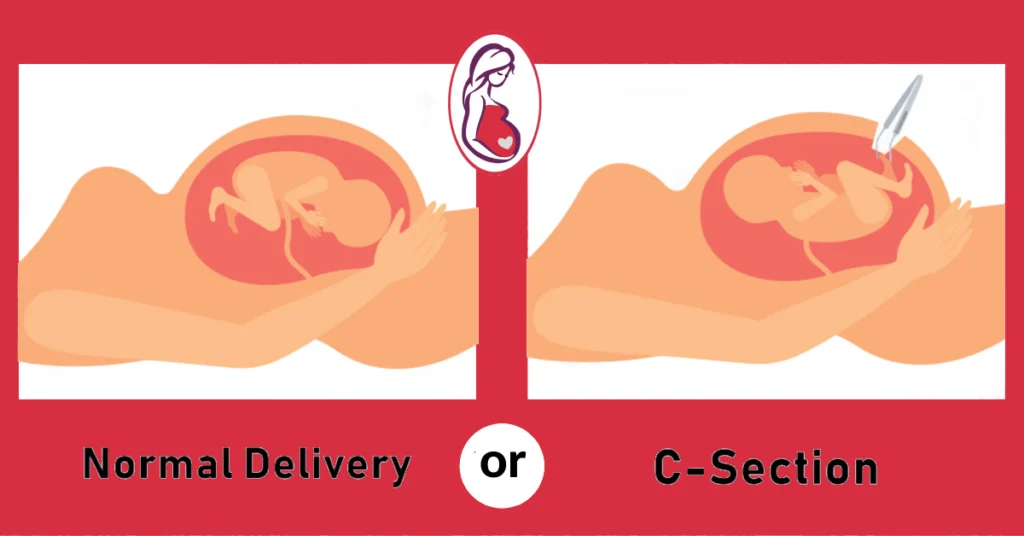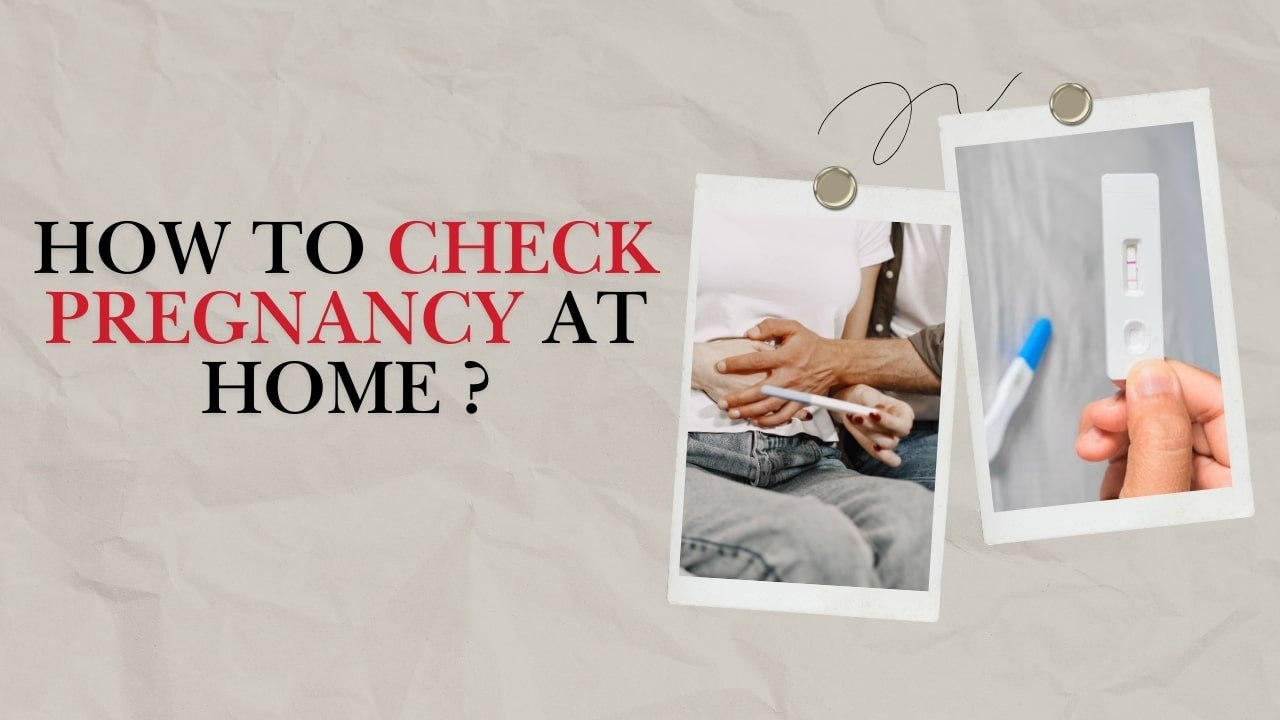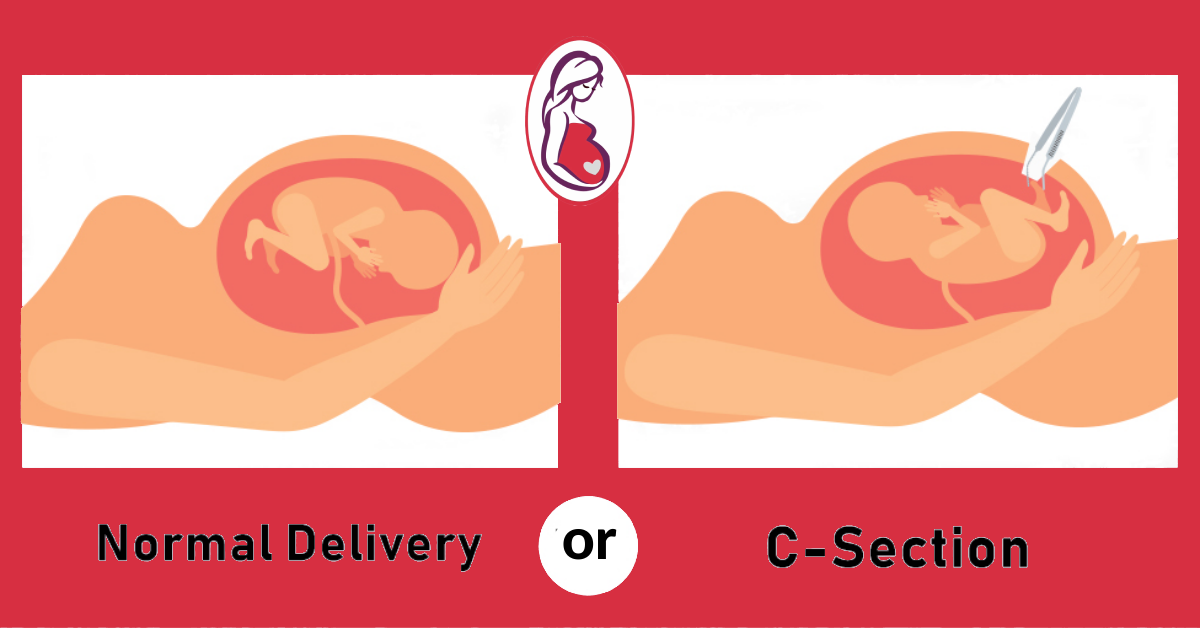Nearly all women struggle to decide between a C-section and a vaginal birth. To be honest, there isn’t a single solution that works in every situation. Every pregnancy has its own setbacks, every mother’s narrative is unique, and no two births are the same.
At Nisha Nursing Home, we’re not here to push you in any direction. We do not influence you with any preference. We will discuss the likely positives of both deliveries, the rough patches and what to expect when you’re recovering. Importantly, we also talk about its impact on both you and your baby. And, the bottom line? We just want you to feel good about whatever call you make.
IS NORMAL DELIVERY BETTER THAN C-SECTION?
What is normal delivery?
In our country, a vaginal birth is commonly referred to as ‘normal delivery’, since it is the natural way for babies to enter the world. In vaginal birth, the baby moves through the birth canal without any surgical procedures. It’s usually the preferred method of delivery when there are no complications with one’s pregnancy. This process is advised when both the mother and baby are healthy. Vaginal births generally come with fewer surgical risks. Hence, they allow you for a quicker recovery. However, there can be exceptions where normal delivery can result in prolonged pain and even increase surgical needs.
What is C-section delivery?
A C-section is the abbreviation of a Caesarean section. It is a surgical operation where the baby is delivered via an incision made in the mother’s abdomen and her uterus. The C-section procedure is required when there are complications with the pregnancy. Besides being an emergency measure in pregnancy, a C-section can also be planned in advance. It can be because of medical reasons or even simply due to a personal preference. Typical medical reasons for performing a C-section include breech presentation, fetal distress, or potential health risks to the mother.
Which is safer for mother and baby?
Delivery safety is affected by a number of things. In low-risk pregnancies, a normal birth is seen to be safer and healthier for both the mother and the fetus. A C-section could, however, save a life in extreme circumstances. At Nisha Nursing Home, we base every decision we make about your pregnancy on your health and the protection of your unborn child. We assist moms and families in comprehending the advantages and disadvantages unique to their situation.

C-SECTION VS NORMAL DELIVERY PAIN COMPARISON
Pain during normal delivery
Labor pain is intense — no sugar-coating that. It involves contractions, pressure, and eventual pushing. However, it is a natural process, and many women describe it as “pain with a purpose.” It varies in intensity and duration but ends almost immediately after birth.
Pain during C-section
You won’t feel pain during the surgery itself, thanks to anaesthesia. But post-operative pain and discomfort from the incision can last for several days, sometimes longer. There may also be limitations on movement and activity while healing.
Pain management options at Nisha Nursing Home
We offer multiple pain relief choices for both delivery types — including epidurals, spinal anesthesia, IV painkillers, and relaxation techniques. Our team is trained to manage pain compassionately while ensuring safety.
C-SECTION VS NORMAL DELIVERY RECOVERY TIME
Normal delivery recovery timeline
Recovery after a normal delivery is usually faster. Many women are up and walking within hours, and discharged within 24 to 48 hours. Most can resume light activities within a few days, with complete recovery in about 4 to 6 weeks.
C-section recovery timeline
Recovery takes longer. Since it’s a major abdominal surgery, healing may take 6 to 8 weeks or more. Mothers often need help moving around in the initial days, and activities like lifting or driving are restricted.
Post-delivery care at our facility
No matter your delivery type, we offer personalized postpartum care — wound checks, breastfeeding support, emotional counseling, and regular follow-ups to ensure your body heals well and your baby thrives.
WHICH DELIVERY IS LESS PAINFUL?
Understanding labour pain
Labor pain is real — but temporary. It’s influenced by your body’s readiness, the baby’s position, and even your mental state. Breathing techniques, warm baths, and birth partners help many women cope naturally. And medical pain relief is always an option.
C-section procedure comfort
While a C-section can save you from the labor pain, it does come with the likely consequences of a surgery. You’ll be of course numb during the operation, which means you feel no pain at all. But once it’s over, you might experience pain, gas buildup, the discomfort of C-section stitches and recovery fatigue. It’s not so much about being completely free from pain, it’s really about figuring out what kind of experience works best for you given your health condition. But do not worry, modern medicine has come up with strategies to ease your pain!
Pain relief methods we offer
At Nisha Nursing Home, we believe no mother should suffer unnecessarily. From epidurals to gentle post-op care, we tailor your pain relief plan. Our focus is your comfort, dignity, and safety — because how you feel during and after birth matters just as much as the outcome. We try our best to give you a painless experience after your C-section.
CAN I CHOOSE C-SECTION OVER NORMAL DELIVERY?
Choosing between C-section and normal delivery can be both a personal decision, and a medical decision. It’s best advised if the decision is rooted in your health, your baby’s needs, and your birth plan. We also believe that what matters most is whether you feel heard, supported, and empowered. Whether you birth through strength and sweat, or scalpel and stitches — every journey to motherhood is precious!
Patient choice considerations
You are free to state that you would prefer a C-section, particularly if you have serious medical, psychological, or personal issues. Your doctor will constantly weigh the advantages and disadvantages, though. At Nisha Nursing Home, we honour your decision while making sure you fully comprehend its ramifications.
Medical recommendations
While normal delivery is recommended for most low-risk pregnancies, there are situations where C-section is the safer choice. We weigh your history, physical health, and any complications before making a recommendation.
Consultation process at Nisha Nursing Home
We sit down with you, explain both options in detail, and help you weigh the pros and cons. Your delivery plan is made together — with you, not for you.
C-SECTION VS NORMAL DELIVERY COST IN DEHRADUN
Normal delivery cost breakdown
At Nisha Nursing Home, the average cost of a normal delivery includes doctor consultation, labor room charges, and postnatal care. It’s generally lower than a C-section because it doesn’t involve surgery or anesthesia.
C-section cost analysis
A C-section involves higher hospital stay, operation theatre charges, anesthesiologist fees, and extended post-op care. We provide a transparent cost breakdown so you know exactly what to expect — with no hidden fees.
C-SECTION VS NORMAL DELIVERY FOR FIRST BABY
First-time mother considerations
First-time moms often worry about labor pain and delivery outcomes. With proper guidance and preparation, many first-time deliveries are smooth and uncomplicated.
Risk factors for first pregnancy
Sometimes, conditions like gestational diabetes, high blood pressure, or baby’s position may call for a C-section in the first pregnancy. These are closely monitored.
Our expert guidance for new mothers
We offer antenatal counseling, Lamaze classes, and personalized support so that first-time moms walk in with confidence — not fear.
WHEN IS C-SECTION RECOMMENDED?
Medical conditions requiring C-section
Because of placenta previa, breech posture, or the risk of uterine rupture, a C-section might be a safer option for childbirth. Having multiple pregnancies, such as twins or more, is another typical reason for opting for a cesarean delivery.
Emergency C-section situations
For safety reasons, an emergency C-section may be required if labor slows, the infant exhibits discomfort, or there is considerable bleeding.
Planned C-section reasons
Some mothers opt for a planned C-section due to previous surgeries, medical history, or scheduling convenience. We ensure such decisions are supported by medical rationale.
WHY CHOOSE NISHA NURSING HOME FOR DELIVERY?
Best gynecologists in Dehradun
Our team brings years of experience, compassion, and attention to detail. You’re not just a patient — you’re family here.
Modern facilities and equipment for C section Delivery
From advanced fetal monitoring to state-of-the-art operation theatres, we are fully equipped for safe, hygienic, and seamless delivery experiences.
Nisha Nursing Home Offers Complete Maternity Care
We are there for you from the first ultrasound to the first scream of your child. Nutrition counseling, birthing classes, postpartum visits, and neonatal care are all included in our comprehensive maternity care package.
CONCLUSION: CHOOSING HOW TO BIRTH
We often talk about childbirth as a medical event, a logistical decision, or a tug-of-war between pain and procedure. But beneath those choices, there’s something quieter — a topography of feeling that rarely makes it into brochures or consultations.
Your decision—a vaginal delivery or a C-section—is not only based on medical advice; it frequently reflects your anxieties, past experiences, family’s opinions, your doctor’s enthusiasm, and even that old tale you heard at your cousin’s baby shower. What your body has experienced or hasn’t yet dared to accomplish can shape it. And this is all correct.
Some women choose a C-section not because they’re afraid of pain, but because they crave predictability. Others wait for natural labor not because they want a gold star in endurance, but because they’re trusting a kind of ancient bodily wisdom. Neither path is more noble. Neither makes you more or less of a mother. The real weight of the decision often lies in what feels emotionally sustainable for you — not just physically possible.
At Nisha Nursing Home, we’re trained in evidence. But we’re also attuned to emotion. We’ve learned that the heart doesn’t speak in test reports. It speaks in hesitation, in gut-feelings, in silences that fill a consultation room. We listen to that.
So wherever you are — unsure, certain, somewhere in between — know this: You don’t have to perform strength. You don’t have to justify your softness. Birth is not a test. It’s a threshold. You are allowed to cross it in the way that makes you feel most intact.
Let it be your story. Let it be yours, fully.
FAQ
The baby or body may occasionally give warning signs that a typical delivery could be dangerous. These include breech position, delayed labor, placenta previa (when the placenta covers the cervix), or indications that the infant isn't handling things well. In these situations, a C-section is a precaution rather than a quick fix. Physicians never do unnecessary surgery; safety, not convenience, is the primary consideration.
Indeed, many women are able to do so through a procedure known as a VBAC (Vaginal Birth After Cesarean). Depending on the reason for your prior C-section, the type of incision that had to be made, and the status of your present pregnancy, it may or may not be advised. It's about reassessing your body and finding the mode of delivery that suits your health. Your doctor will guide you through it, assessing each safety precaution.
Not always., Most mothers are able to breastfeed after a C-section. It is just that the first few feeds may be a little challenging because of the pain from incision, and the discomfort from the back. Good placement, lactation support, and skin-to-skin contact can all make a big difference. The assistance you receive after giving birth is more important than the technique of delivery.
You will definitely have a voice. Giving birth should, in our opinion at Nisha Nursing Home, be a collaborative choice rather than an order. We will respect your wishes, go over all potential consequences, and give you medical advice. Even though safety comes first, your comfort, mental preparedness, and informed permission are equally important. Through the birth that occurs in your body, we are here to help you.
Yes, and discussing it is OK. Some mothers may feel overwhelmed by the intensity of vaginal delivery, while others may be discouraged if they intended for a natural birth and ended up needing a C-section. While emotional recovery isn't always evident, physical recovery is. For this reason, postpartum care should involve check-ins as well as check-ups, with specialists who listen without passing judgment.




